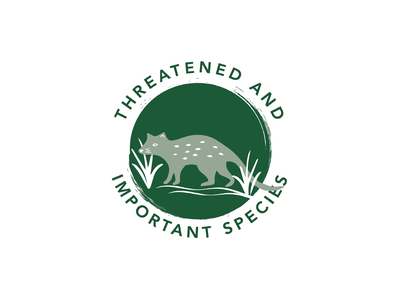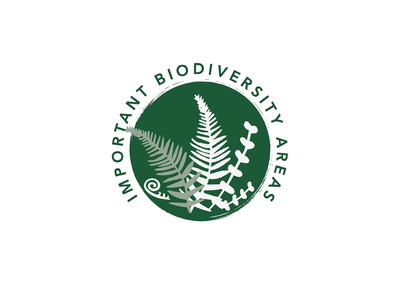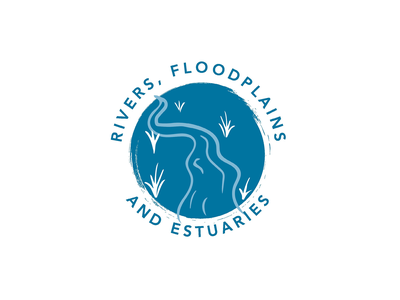Giant freshwater crayfish: enhancing habitat conservation
This project builds on achievements of NRM North’s previous Australian Government National Landcare funded project, working in additional catchments to expand the distribution of existing populations of the giant freshwater crayfish (GFC), Astacopsis gouldi, with funding obtained through the Natural Heritage Trust project 'Restoring North-East rivers to benefit iconic species'.
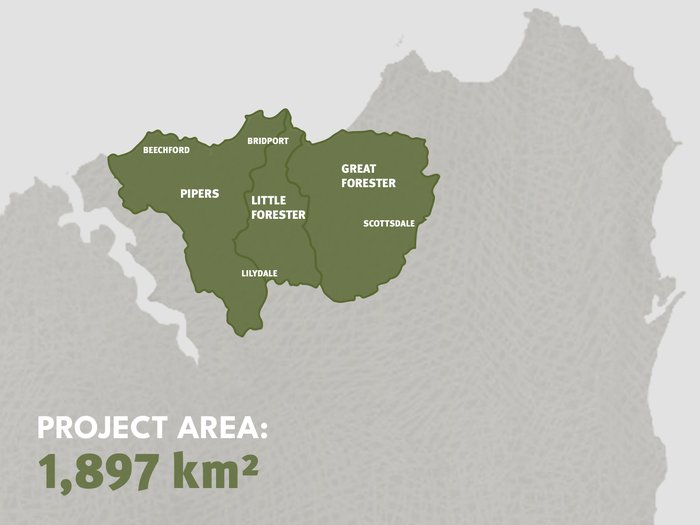
Map of Tasmania showing the project catchments target area.
Background
Background
The Tasmanian giant freshwater crayfish (Astacopsis gouldi) is the largest freshwater invertebrate in the world. Endemic to northern Tasmania, it is only found in rivers that flow into Bass Strait and the Arthur catchment (except for the Tamar catchment) and is culturally significant to the Tasmanian Aboriginal community.
Once a common sight in northern Tasmania, the species is now listed as vulnerable under both the Threatened Species Protection Act 1995 and the Environment Protection and Biodiversity Conservation Act 1999 and as endangered under the International Union for Conservation of Nature’s Red List of Threatened Species.
Project Plan
Project Plan
Riparian habitat quality and connectivity will be improved along 15 km of streams in the Pipers, Little Forester, and Great Forester catchments in northern Tasmania by working with private landholders to co-invest in on-ground habitat restoration works. These works included livestock exclusion fencing, controlling weeds, native riverbank revegetation, and providing alternative livestock water sources.
A second key element of the project will engage industry and agency land managers to encourage practice change in waterway management. Two demonstration sites for culvert design and fish passage activities will be piloted, coupled with a tailored training program to embed practices that reduce threats to GFC in their waterway management activities and processes.
These actions will reduce threats to giant freshwater crayfish by:
- maintaining and improving critical habitat for the species and reducing habitat disturbance
- filtering sediment and effluent runoff
- mitigating the impact of climate change such as potential changes to flow and flood events, water temperature extremes, and streamside vegetation health
- improving stakeholder and community knowledge of the species, its threats and habitat requirements.
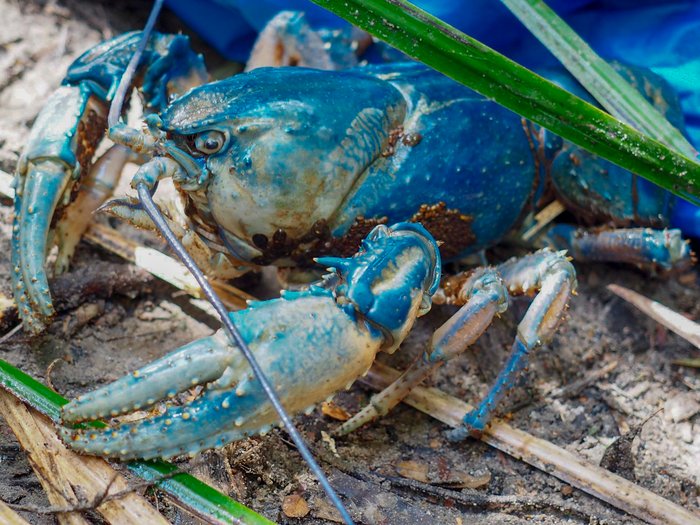
Blue giant freshwater crayfish. Photo: Todd Walsh
Resources
Resources
Expression of Interest
Expression of Interest
NRM North is seeking expressions of interest from landholders in the Pipers, Little Forester and Great Forester catchments in northern Tasmania to get involved in the project, Giant freshwater crayfish: enhancing habitat conservation, to expand the distribution of existing populations of the Giant Freshwater Crayfish (GFC), Astacopsis gouldi.
Partners
This project is funded by the Australian Government’s Natural Heritage Trust and delivered by NRM North, a member of the Commonwealth Regional Delivery Partners panel.
Partners
This project is funded by the Australian Government’s Natural Heritage Trust and delivered by NRM North, a member of the Commonwealth Regional Delivery Partners panel.
